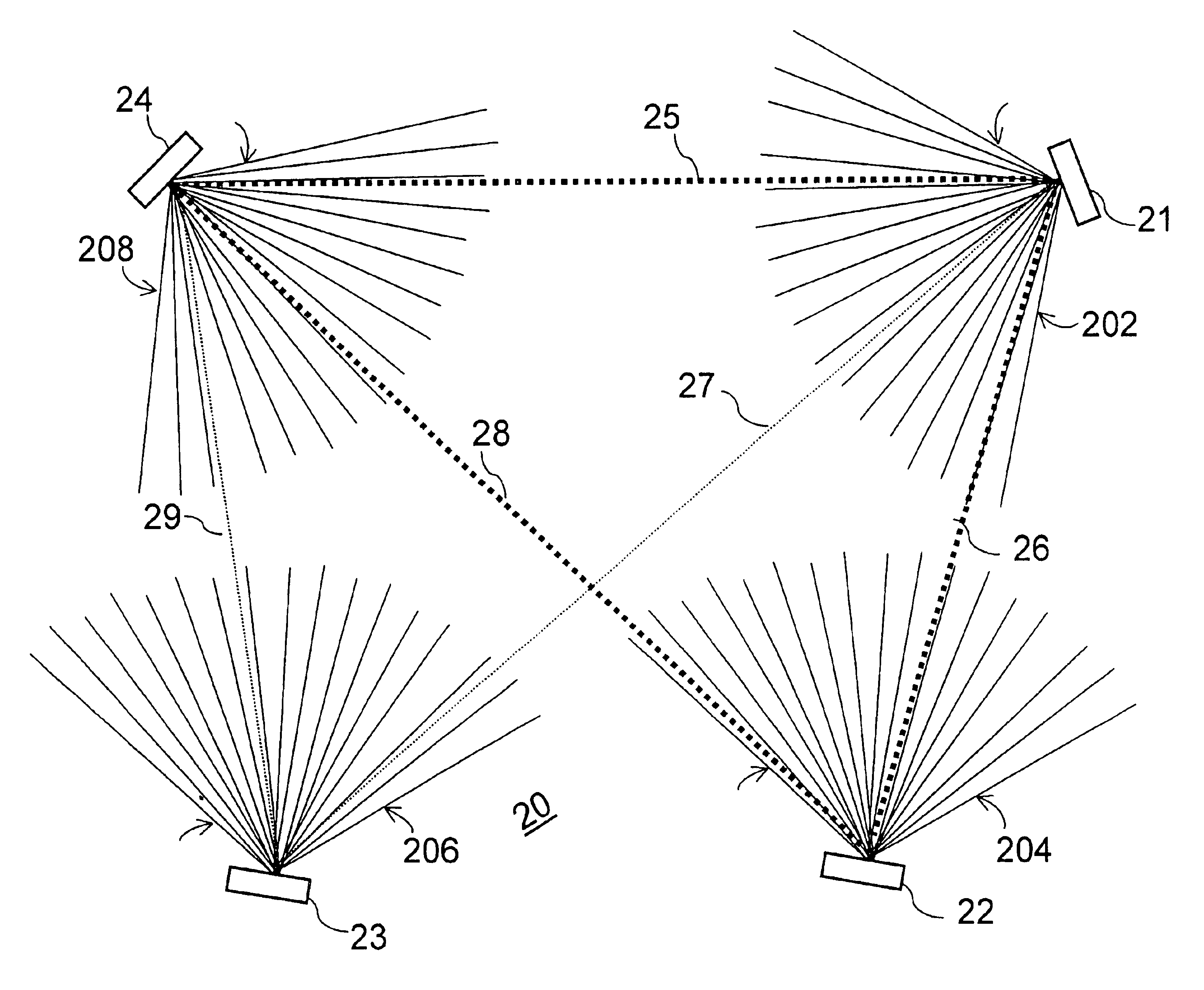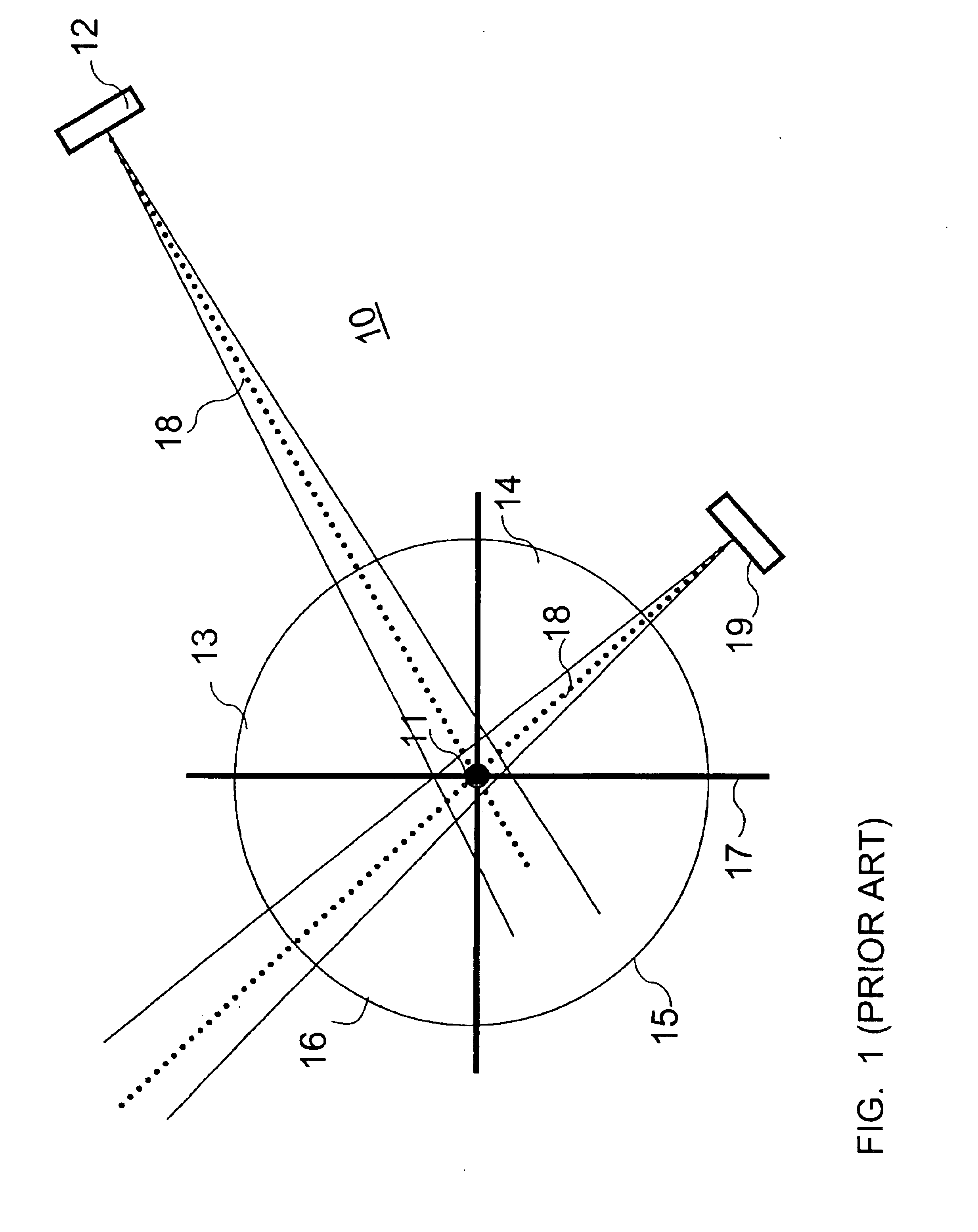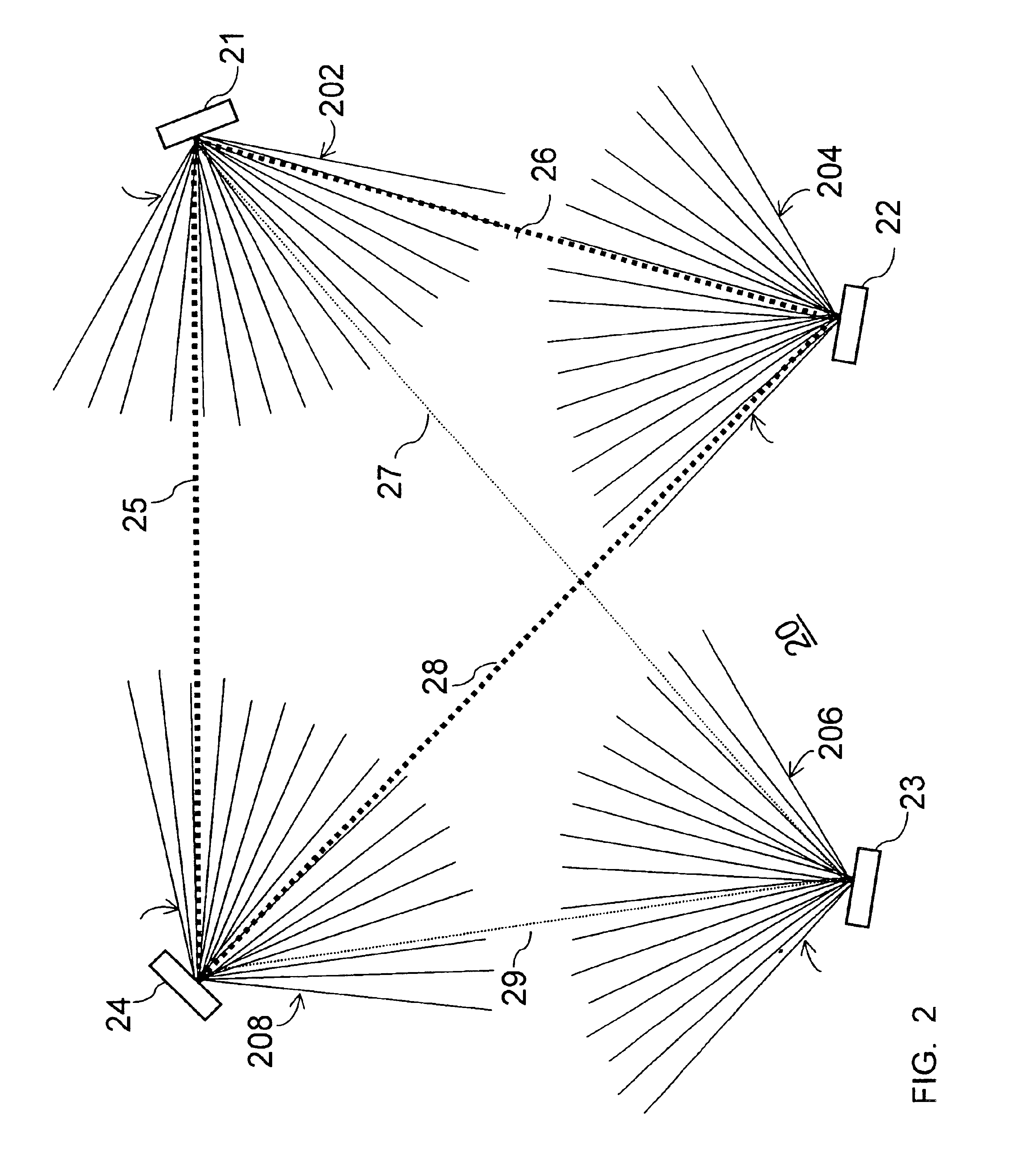Join process method for admitting a node to a wireless mesh network
a wireless mesh network and process method technology, applied in the field of networkwork, can solve the problems of costly manpower activity in the admission process, and achieve the effect of reducing frequency interference and reducing time required
- Summary
- Abstract
- Description
- Claims
- Application Information
AI Technical Summary
Benefits of technology
Problems solved by technology
Method used
Image
Examples
Embodiment Construction
The present embodiments describe a novel automatic join process method and apparatus designed to admit spatially dispersed wireless nodes to a wireless network using a time, frequency and space synchronized algorithm of both the inviting network nodes and the joining node. The new automatic generic join algorithm process is designed to admit a wireless network node which includes a space diversity antenna. The new network node is added to a wireless network including other wireless nodes each of which also include a space diversity antenna. In this novel network topology, it is necessary to simultaneously adjust the beam lobes of the inviting network nodes in the direction of the joining node while synchronizing the transmission and receiving time and frequency, with minimum interruption and minimum overhead to the network existing communication traffic.
The illustrated method is generic for different types of beam steering technologies. Examples include those implemented with phase ...
PUM
 Login to View More
Login to View More Abstract
Description
Claims
Application Information
 Login to View More
Login to View More - R&D
- Intellectual Property
- Life Sciences
- Materials
- Tech Scout
- Unparalleled Data Quality
- Higher Quality Content
- 60% Fewer Hallucinations
Browse by: Latest US Patents, China's latest patents, Technical Efficacy Thesaurus, Application Domain, Technology Topic, Popular Technical Reports.
© 2025 PatSnap. All rights reserved.Legal|Privacy policy|Modern Slavery Act Transparency Statement|Sitemap|About US| Contact US: help@patsnap.com



